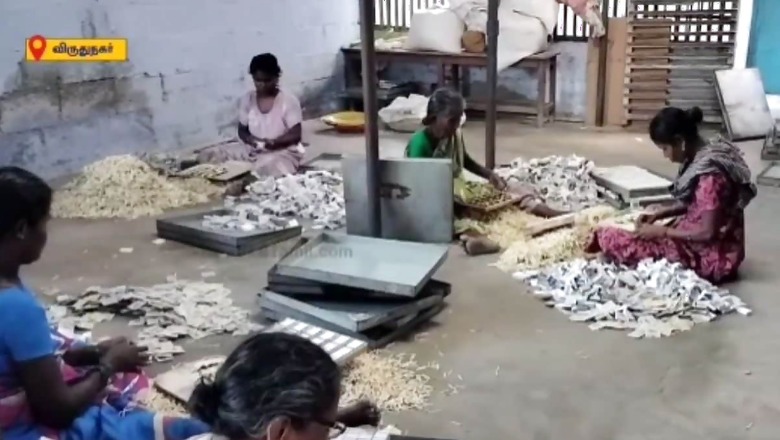
views
In the evolving landscape of technological advancements, matchsticks, though somewhat overshadowed by lighters, continue to play a crucial role in our daily lives. From igniting the traditional ghee lamp to lighting agarbattis and candles, matchsticks remain a staple for various purposes. However, the shift towards alternative ignition methods has significantly impacted the matchstick industry, particularly in Virudhunagar, a district in Tamil Nadu that has been a matchstick production hub for nearly a century.
In a recent interaction with Local 18, workers shed light on the traditional method of matchstick production. While matchboxes were once meticulously crafted by hand, modern manufacturing has introduced machines into the process. Despite this technological integration, the final step of placing the matchsticks into the matchbox still relies on manual labour, with a substantial number of women in the district involved in this packing process.
Addressing the changes, the matchbox workers highlighted that the introduction of machines was driven by a shortage of manual labour. Although these machines increased production efficiency significantly, the industry faced a setback due to dwindling demand, attributed to the widespread adoption of lighters. The convenience offered by lighters led to a substantial portion of the population choosing them over traditional matchsticks.
In a noteworthy development in September 2022, Tamil Nadu Chief Minister MK Stalin advocated for a ban on the import of single-use plastic lighters. The appeal was a response to the growing competition in the domestic matches market, fueled by the influx of inexpensive disposable lighters from China.
The COVID-19 pandemic also wrought changes in the match industry, impacting its economic dynamics. Import disruptions during the pandemic contributed to a surge in match prices, escalating from Re 1 to Rs 2 in October 2021. Despite this price hike, the financial conditions for those dependent on matchstick production did not witness significant improvement.




















Comments
0 comment